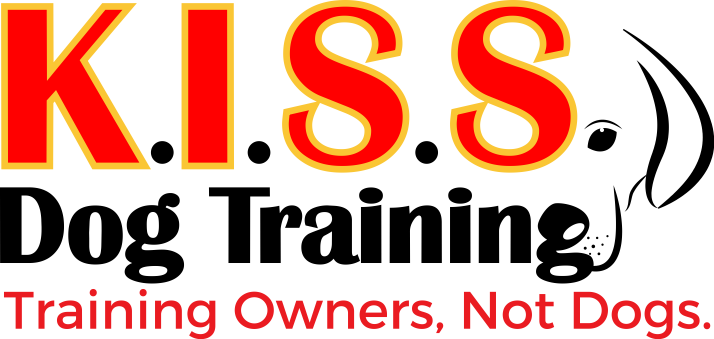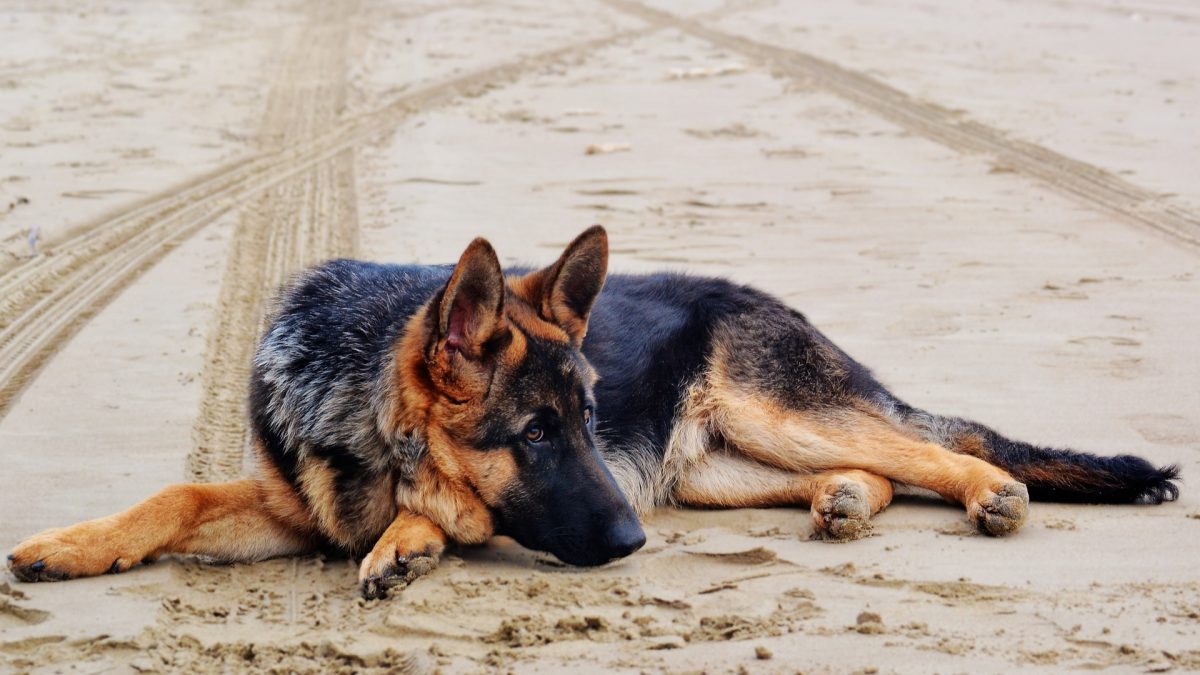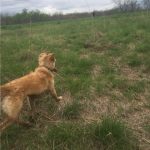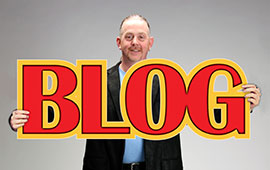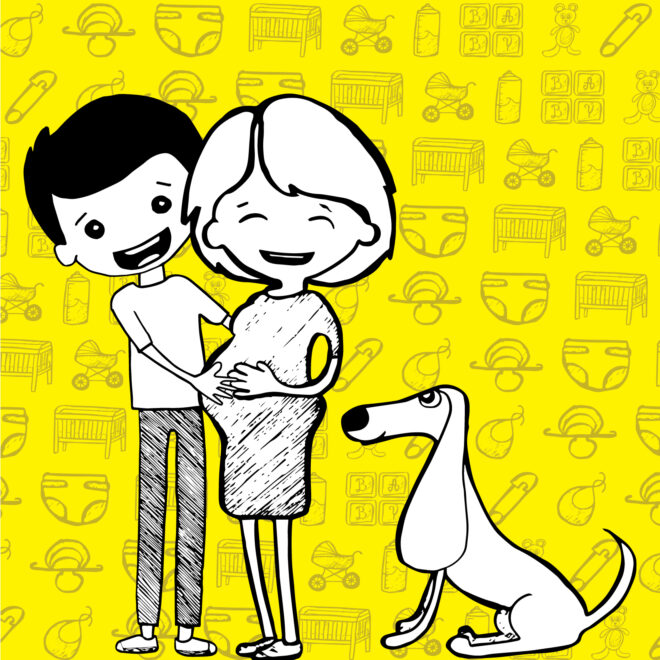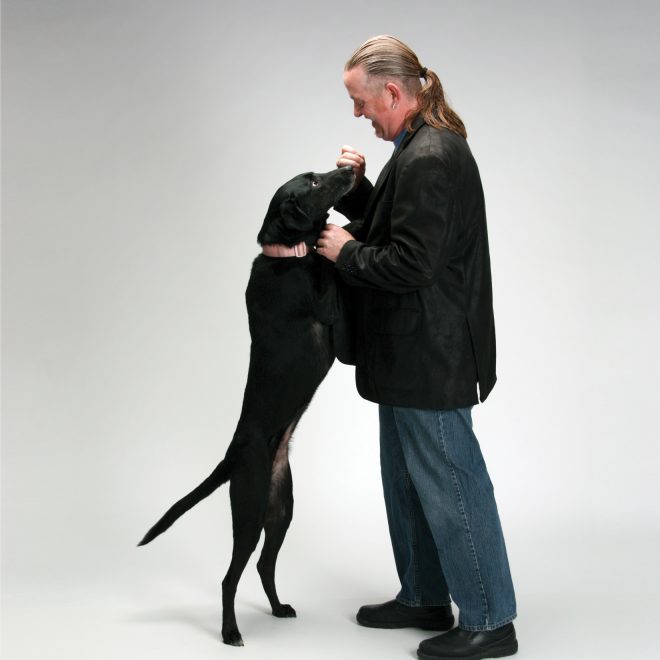Sit Part 2….How it’s done and using a clicker!
 OK, at this point you know that a polite “sit” is the way your dog asks for something or says please. Now for the big question, how do we teach sit? Well, we know that “sit” is when a dog puts his/her rump on the ground, right? So, let’s use a little bit of physics to help us get this behavior. Put simply, where the nose goes, the butt follows! I start with a basic luring technique. I hold a treat near the dog’s nose until Fido is interested in it, and then move my hand with the treat in it, back over the dog’s head towards the tail. You will notice that as the dog tries to follow the treat with their nose they fold into a sit so they can get to the treat! This sounds really simple and it is; but you have to consider the value of the reward and the speed in which you lure the dog with the treat! With a couple of tries and some patience you should be able to consistently lure the dog into the sit position! The mechanics are easy; the process is a little more complicated! When do I click? Do I say “sit”? When do I treat? Do I use a hand signal? The answer to all of these is yes, but the order is specific and important!
OK, at this point you know that a polite “sit” is the way your dog asks for something or says please. Now for the big question, how do we teach sit? Well, we know that “sit” is when a dog puts his/her rump on the ground, right? So, let’s use a little bit of physics to help us get this behavior. Put simply, where the nose goes, the butt follows! I start with a basic luring technique. I hold a treat near the dog’s nose until Fido is interested in it, and then move my hand with the treat in it, back over the dog’s head towards the tail. You will notice that as the dog tries to follow the treat with their nose they fold into a sit so they can get to the treat! This sounds really simple and it is; but you have to consider the value of the reward and the speed in which you lure the dog with the treat! With a couple of tries and some patience you should be able to consistently lure the dog into the sit position! The mechanics are easy; the process is a little more complicated! When do I click? Do I say “sit”? When do I treat? Do I use a hand signal? The answer to all of these is yes, but the order is specific and important!
As you are luring the dog to this position you need to also be using the clicker! I know that some people are not fans of this device and debate its usefulness, but if you have been reading my blog at all, you know I am a big believer in these simple noise makers as a way to tell your dog they have done something correctly. To those who are new, see my post on terminology for explanation of positive markers. The idea of a clicker is to bridge the time period between performing the right behavior and getting the reward. The click will be used as a way to let the dog know that what they have done is correct, and that a treat or reward is on its way. So, as you lure the dog into a “sit”, make sure to click the moment Fido’s rump hits the floor, and follow with a tasty treat or toy, to let them know they got it right!
I need to mention at this point that a release word must also be worked into the picture. If not, you will find the dog releasing their “sit” at the sound of the clicker. Remember, the click is the positive mark (letting the dog know they have done something right); but how do we let the dog know it is OK to come out of the sit and get the treat? Enter the idea of a release word. The release word is used in conjunction with the positive mark (clicker). The idea here is the clicker tells the dog something correct has happened, and a treat is on the way, while the release word tells the dog the behavior is complete and now you can come get the treat or reward. So, after the rump hits the ground and you click, you will need to say the release word (all done is mine) then allow the dog to have the treat. As the dog becomes better at the command sit you will begin to add time between the click and the release word, which will start building time (duration of the command) or what we call stay (this concept will be covered in a later post.) As you go forward you will find that many dogs will begin to work just for the noise of the clicker! At this point, we not only have a dog that can be lured into a sit but one that is working for the positive mark of the click.
So now you’ve got “sit” mastered with the click, release word and treat. What is the next step? Check out the next post to learn the importance of timing as well as the difference between the hand signal and the verbal command. You’ll then determine if it is more important to speak human or dog!
Related Posts
Search Blogs
Most Popular Posts
Best Selling Books
K.I.S.S. Dog Training proudly serves the Kansas City Metro, Overland Park and Surrounding Areas. 40 miles, 20 miles each way from Shawnee, KS is included for In-Home Sessions... Over that mileage is an additional charge of $1.00 per mile... Call with Questions
Contact Us Today!
K.I.S.S. Dog Training
Shawnee, Kansas
(913) 269-7595
